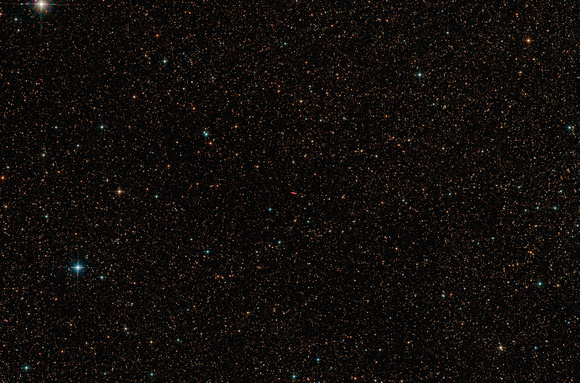Minkowski’s Footprint – Protoplanetary Nebula in NB/BB (Cygnus) - The Smallest of Targets - July 2023
Planewave CDK12.5; AP 1100GTO AE
ASI6200MM, - Antlia Pro RGB & 3.5nm NB filters
Ha,OIII: (29,28 x 400s exposures, Bin 2x2, Gain 200)
R,G,B: (15,16,17 x 120s, Bin 2x2, Gain 200)
L: (31x120s, Bin2x2, Gain200)
Total Integration Time = 9.0 hours
Minkowski’s Footprint is not a Planetary Nebula, but rather a Protoplanetary Nebula – a phase that (some?) dying stars go through before becoming white dwarf and a full-fledged P.N. This object was suggested to me by fellow RASCal, Bill Weir. Errrr. thanks Bill. Minkowski’s Footprint must be the smallest target that I have yet to image, at about 30” in length, with its main structure only half that – it is almost lost in the full camera frame view, which itself is <1 degree. It is 8000 ly distant.
The ESA’s description of
the Hubble image says Minkowski’s Footprint is:
“…a rare astronomical phenomenon called a protoplanetary nebula. This particular example, called Minkowski’s Footprint, also known as Minkowski 92, features two vast onion-shaped structures either side of an ageing star, giving it a very distinctive shape.
Protoplanetary nebulae like Minkowski’s Footprint have short lives, being a preliminary stage to the more common planetary nebula phase. In the middle of the image is a star, soon to be a white dwarf, puffing out material due to intense surface pulsations. Charged particle streams, called stellar winds, are shaping this gas into the interesting shapes that Hubble allows us to see.
Technically speaking Minkowski’s Footprint is currently a reflection nebula as it is only visible due to the light reflected from the central star. In a few thousand years the star will get hotter and its ultraviolet radiation will light up the surrounding gas from within, causing it to glow. At this point it will have become a fully fledged planetary nebula.
The processes behind protoplanetary nebulae are not completely understood, making observations such as this even more important. Hubble has already conducted sterling work in this field, and is set to continue.”
Of course, the Hubble image contains much more detail, but this image not only captures the two onion shaped structures described, but also an outer hydrogen alpha shell that encloses and extends past them. I would have to disagree with the description as it is more than a reflection nebula.
In processing this image, less was definitely more. One can easily over do it with wavelet transforms because it is so small. Also, in this version, I ended up not using my luminance filter data, and was very particular on what R,G,B,H,O frames I used, so actual integration time was quite a bit longer than shown here.


